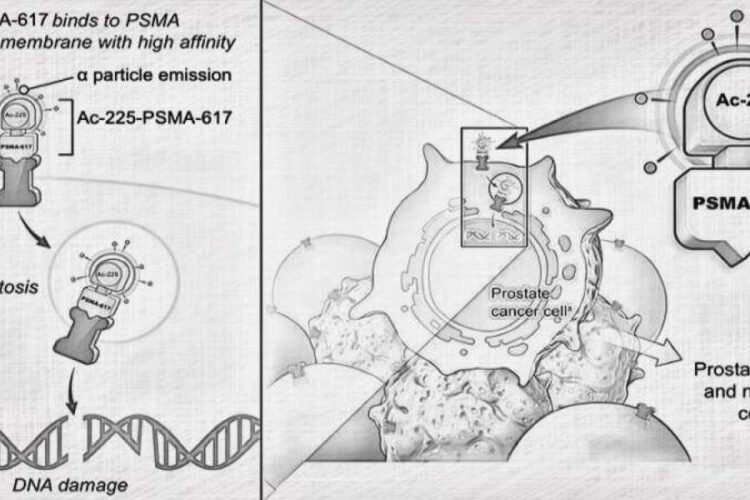Cancer. Just the word itself sends shivers down many spines. But what if there was a new kind of treatment emerging, one with the potential to be more precise and effective? That’s where actinium therapy comes in. Let’s dive into what this innovative treatment is all about.
Why Choose Actinium Therapy?
Traditional cancer treatments like chemotherapy and radiation can be tough on the body. They often damage healthy cells along with the cancerous ones, leading to unpleasant side effects. Actinium therapy offers a new approach: targeted alpha therapy (TAT). Here’s the gist:
Targeted: Imagine microscopic assassins that only go after cancer cells. Actinium therapy uses a radioactive isotope called actinium-225 (Ac-225) attached to a “carrier” molecule. This carrier acts like a homing device, seeking out specific proteins on the surface of cancer cells. Once attached, the Ac-225 delivers a powerful punch of radiation directly to the cancer.
Alpha Power: Unlike traditional radiation treatments that use beta or gamma rays, actinium therapy utilizes alpha particles. These alpha particles are heavy hitters – they travel a very short distance but deposit a lot of energy within that range. This means they can destroy cancer cells with high precision, minimizing damage to surrounding healthy tissue.
Types of Actinium Therapy
Actinium therapy is still under development, but researchers are exploring its potential for various cancers. Here are a couple of promising applications:
Prostate Cancer: For men with advanced prostate cancer that isn’t responding to other treatments, actinium-PSMA therapy is showing promise. PSMA stands for prostate-specific membrane antigen, a protein often found on prostate cancer cells. By attaching Ac-225 to molecules that target PSMA, doctors can deliver radiation directly to the cancer.
Neuroendocrine Tumors (NETs): These are slow-growing tumors that can develop in various parts of the body. Actinium therapy is being investigated as a potential treatment for NETs, particularly those that haven’t responded well to other therapies.
Benefits of Actinium Therapy
The potential benefits of actinium therapy are quite exciting:
More Targeted Treatment: Because alpha particles travel a short distance, actinium therapy can potentially cause fewer side effects on healthy tissues compared to traditional radiation treatments.
Effective Against Resistant Cancers: Some cancers become resistant to other therapies. Actinium therapy offers a new hope for patients who haven’t responded well to conventional treatments.
Promising Results: Early studies are showing encouraging results for actinium therapy in treating certain cancers.
Steps Involved in Actinium Therapy
Actinium therapy is still in the clinical trial phase, meaning it’s being tested on a limited number of patients. Here’s a general idea of what the process might involve:
Consultation: You’ll meet with your doctor to discuss if actinium therapy is a suitable option for you. They’ll review your medical history and current condition.
Preparation: Depending on the type of cancer and your overall health, there might be some preparation steps needed before receiving actinium therapy.
Treatment: The actual actinium therapy procedure might involve an injection or infusion of the radioactive drug. The specifics will depend on the type of cancer being treated.
Monitoring: After receiving actinium therapy, you’ll be closely monitored for any side effects and to assess the treatment’s effectiveness.
Conclusion
Actinium therapy represents a groundbreaking approach to cancer treatment. While it’s still early days, the potential for more targeted and effective treatment with fewer side effects is a beacon of hope for many cancer patients. As research continues, actinium therapy has the potential to become a valuable tool in the fight against cancer.
FAQs
Is actinium therapy a cure for cancer?
Actinium therapy is a promising new treatment, but it’s not necessarily a cure for all cancers. However, it can be very effective in shrinking tumors and improving patients’ quality of life.
Are there side effects to actinium therapy?
As with any treatment, there can be side effects associated with actinium therapy. These might include fatigue, nausea, and low blood cell counts. The specific side effects will depend on the type of cancer being treated and the individual patient.
Where can I find out more about actinium therapy?
Talk to your doctor about whether actinium therapy might be a suitable option for you. You can also find information about ongoing clinical trials on websites like https://www.cancer.gov/).




